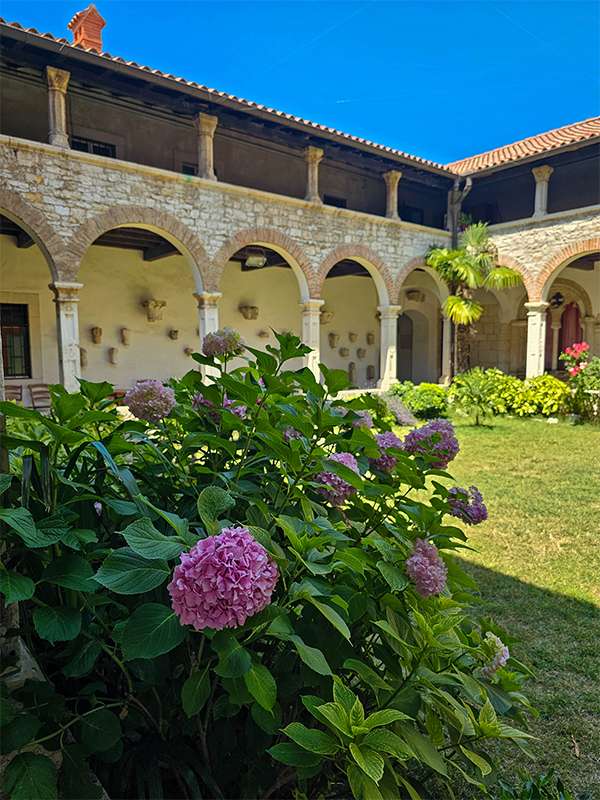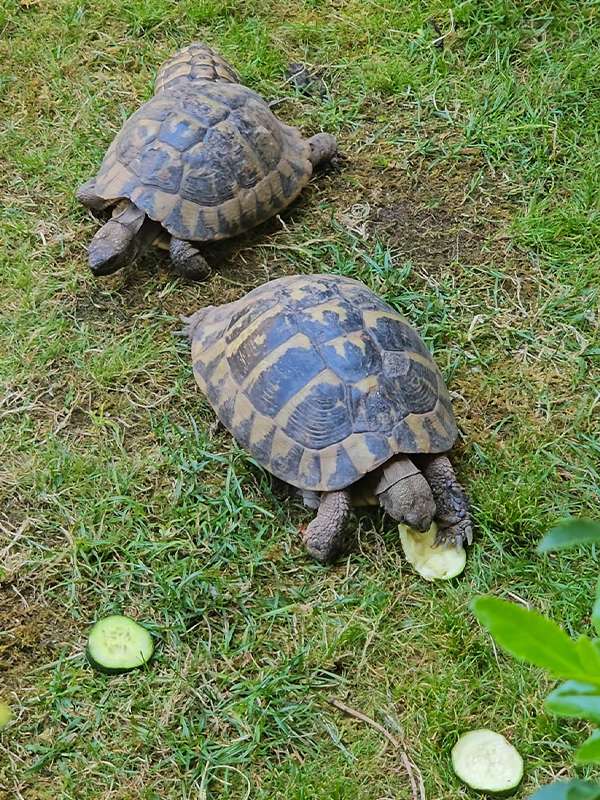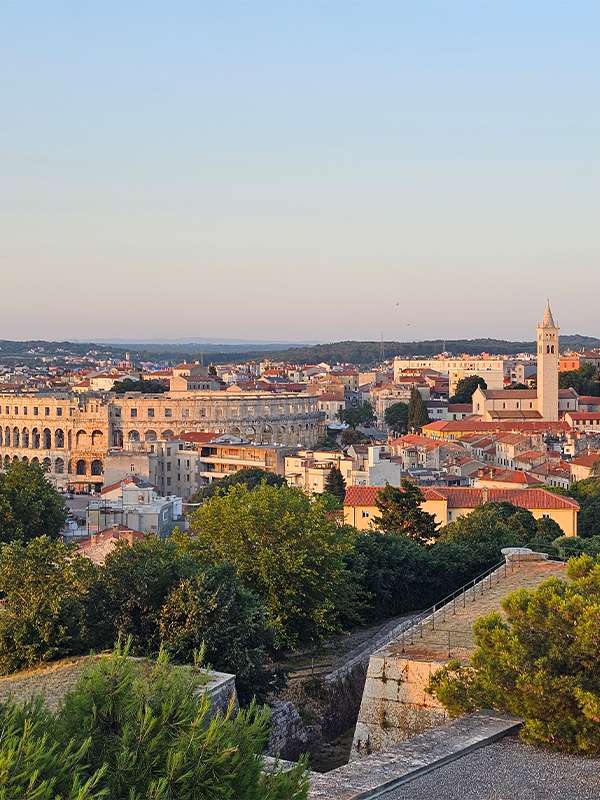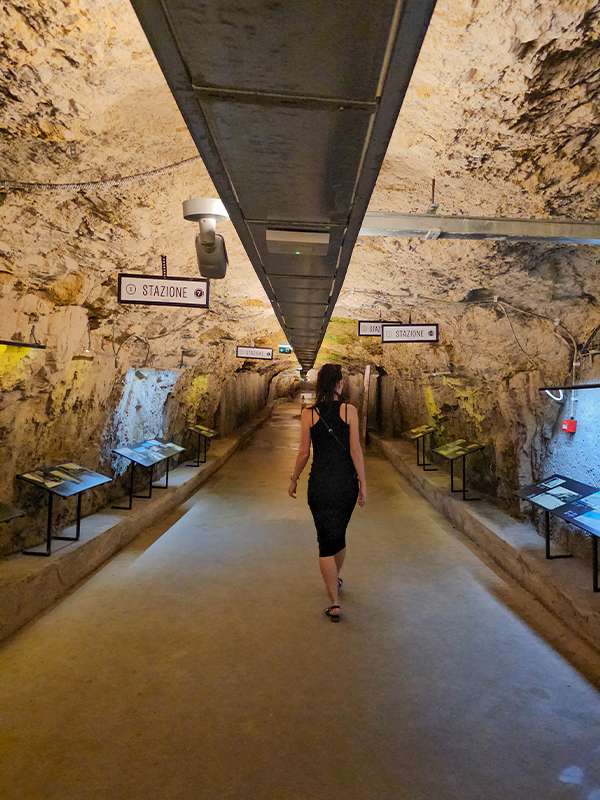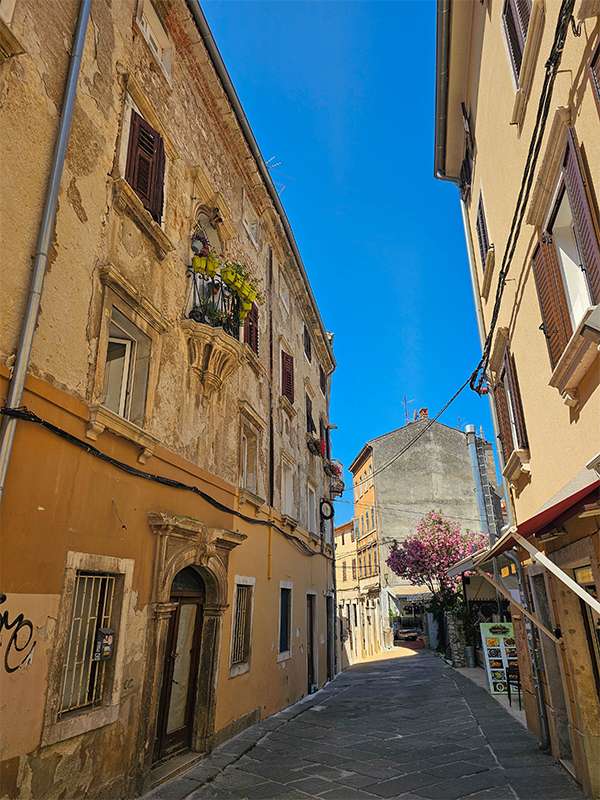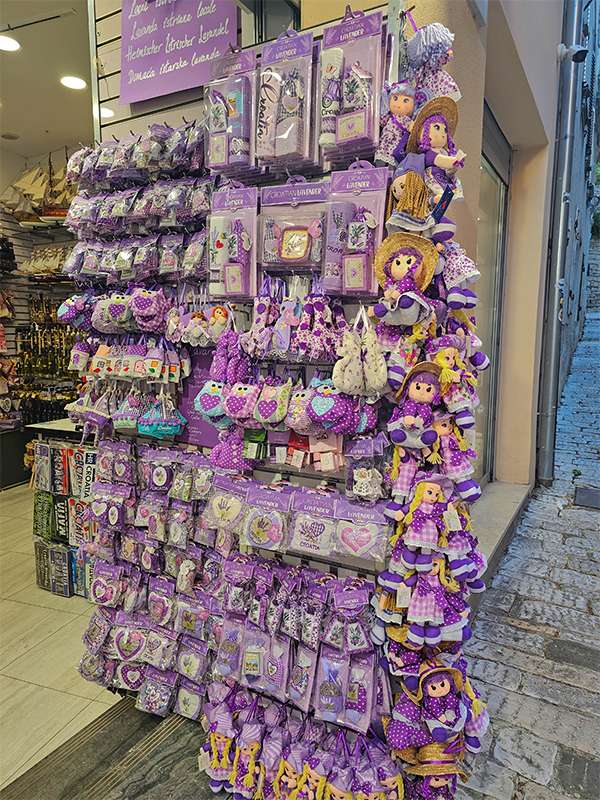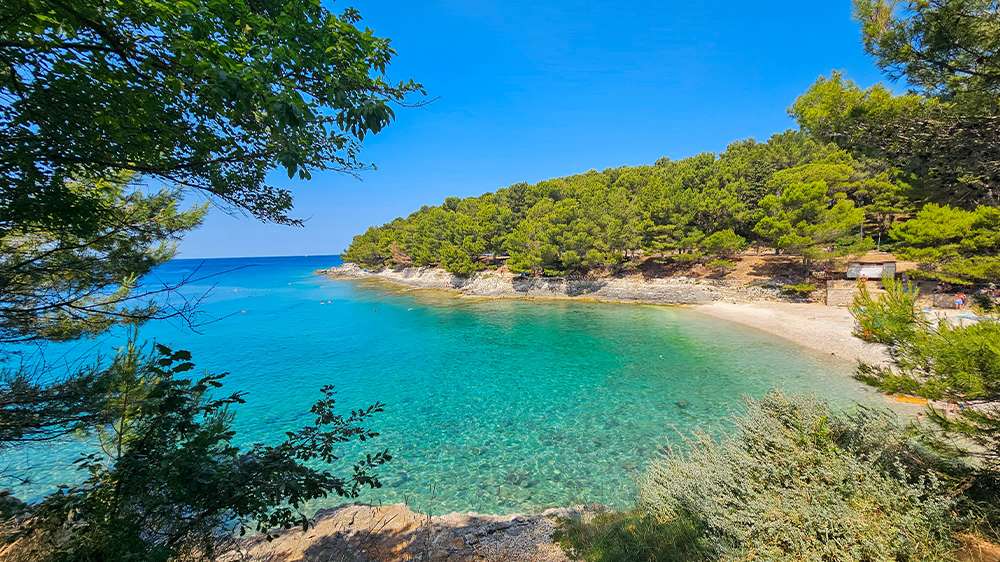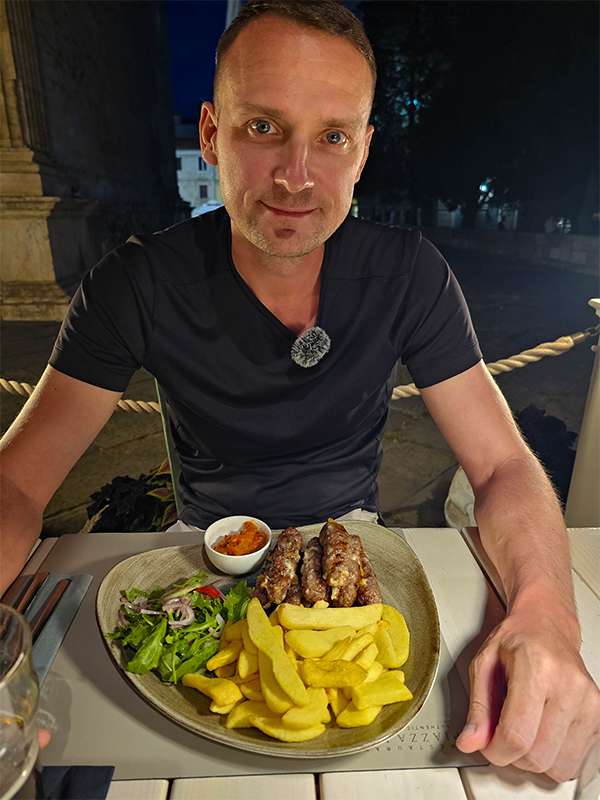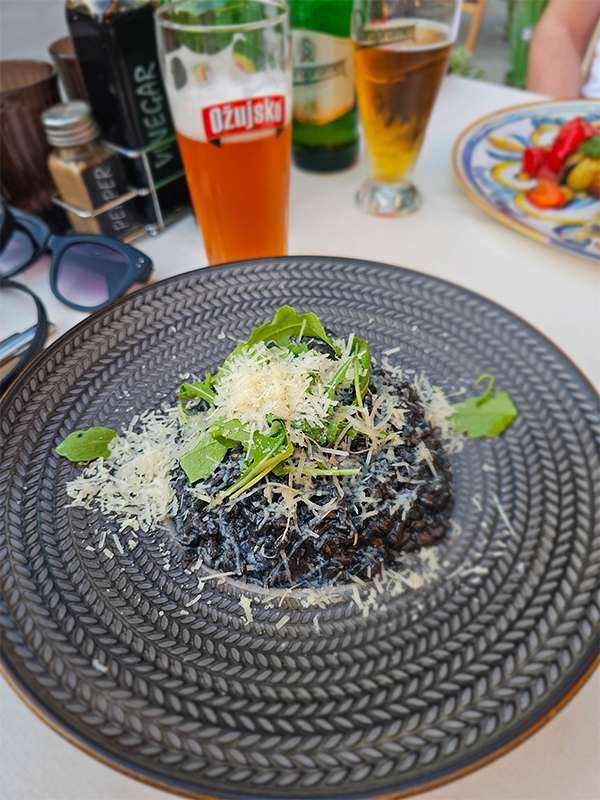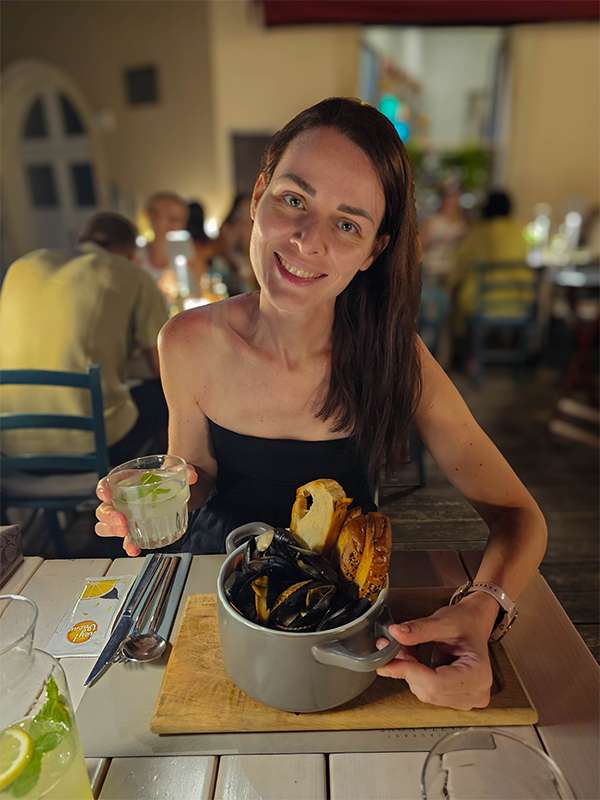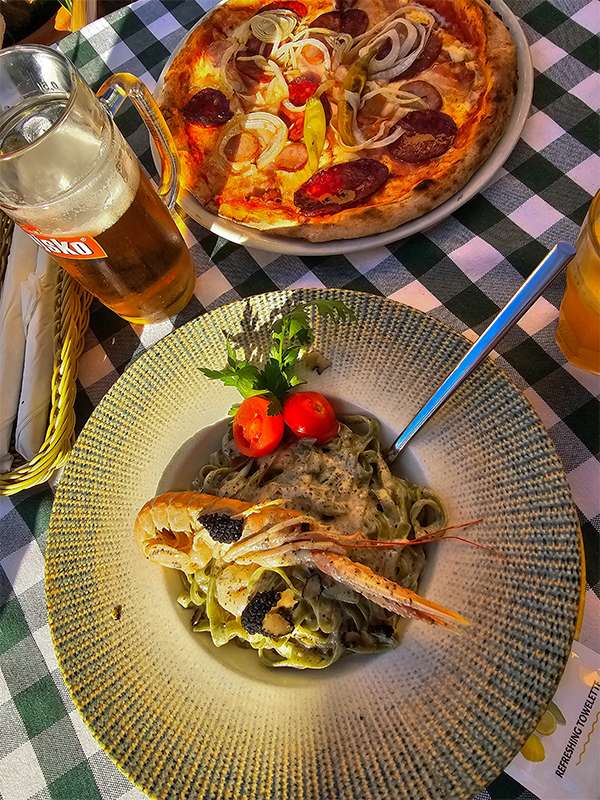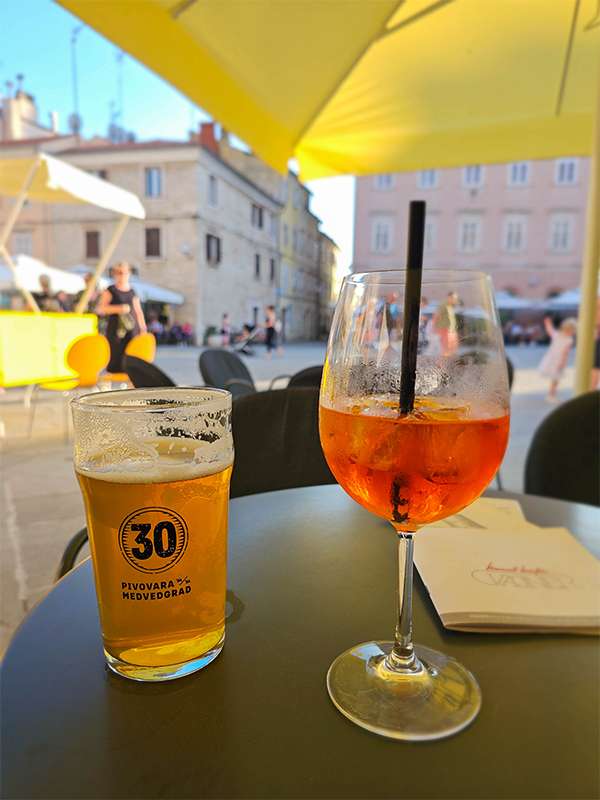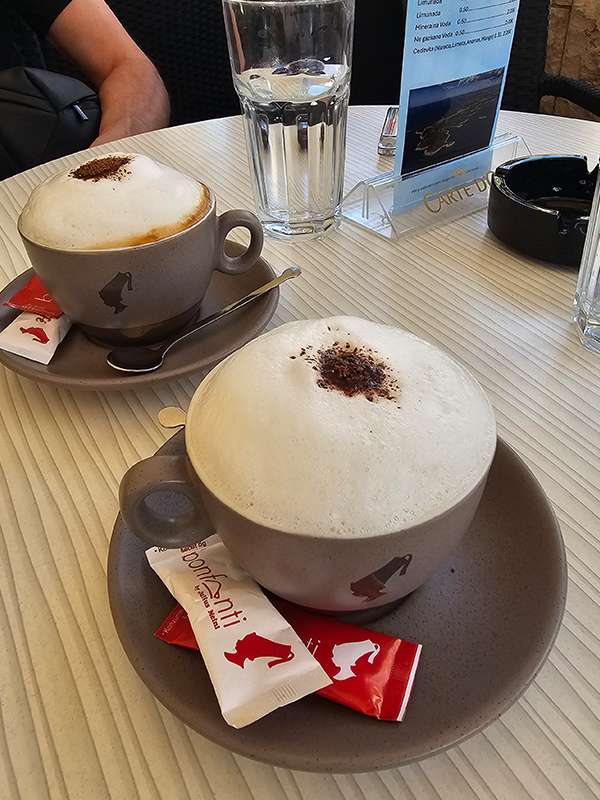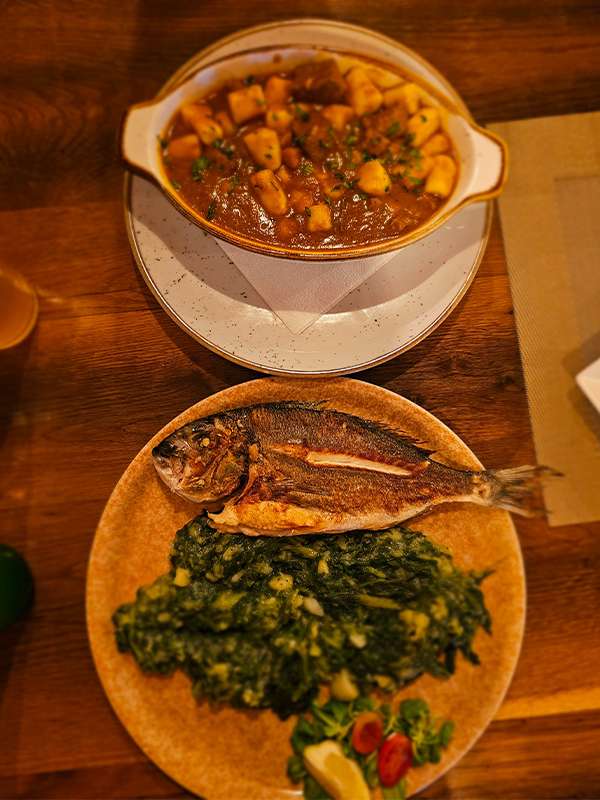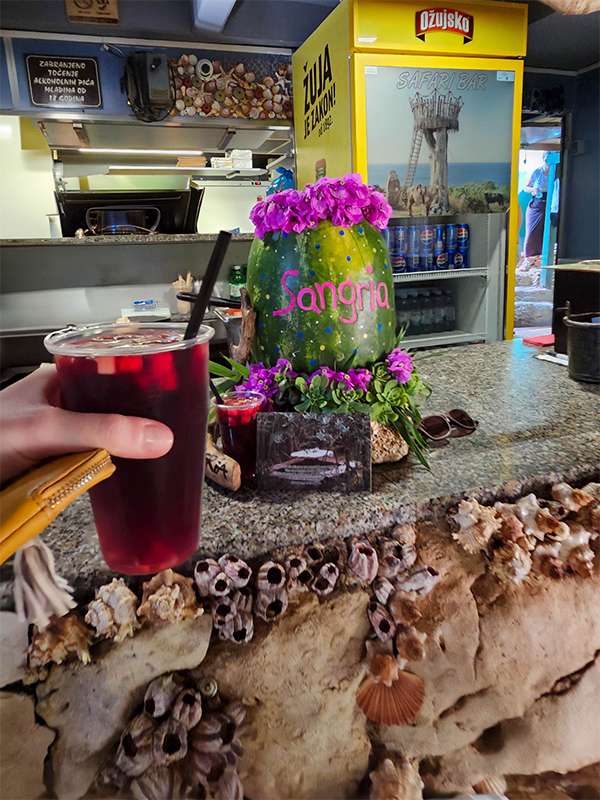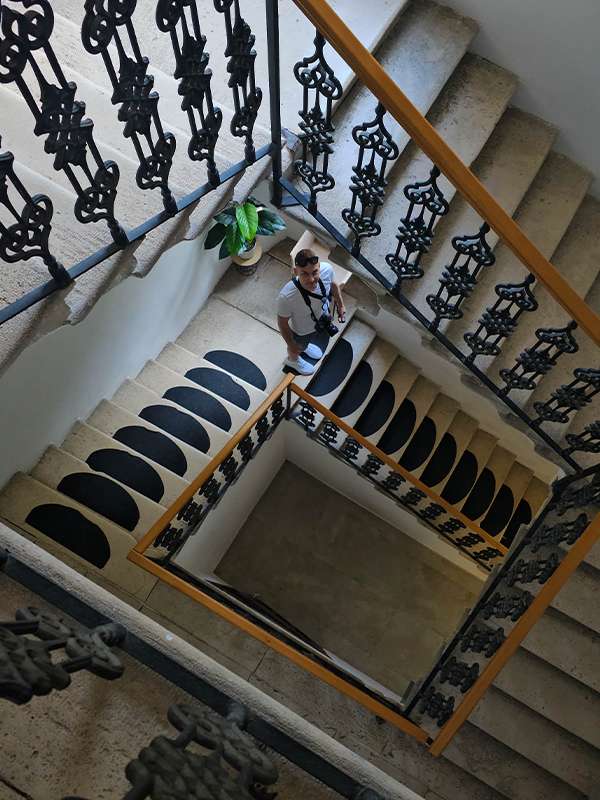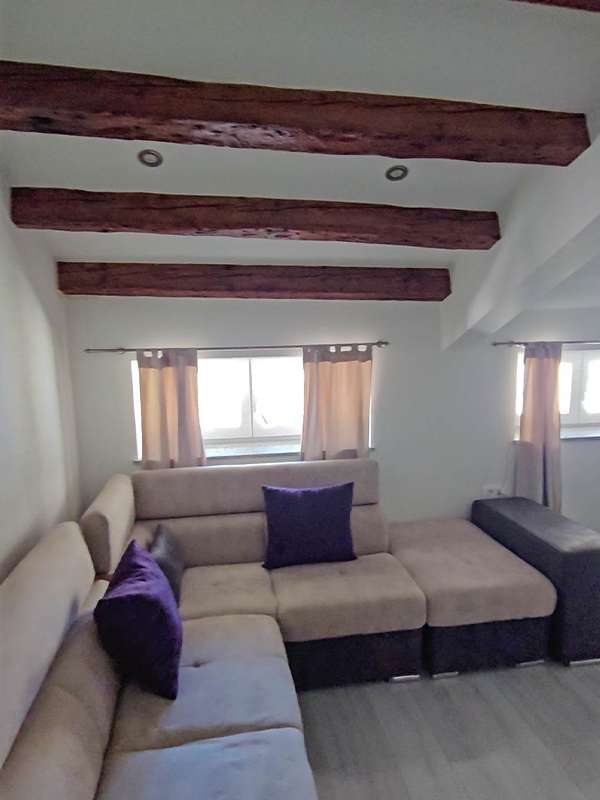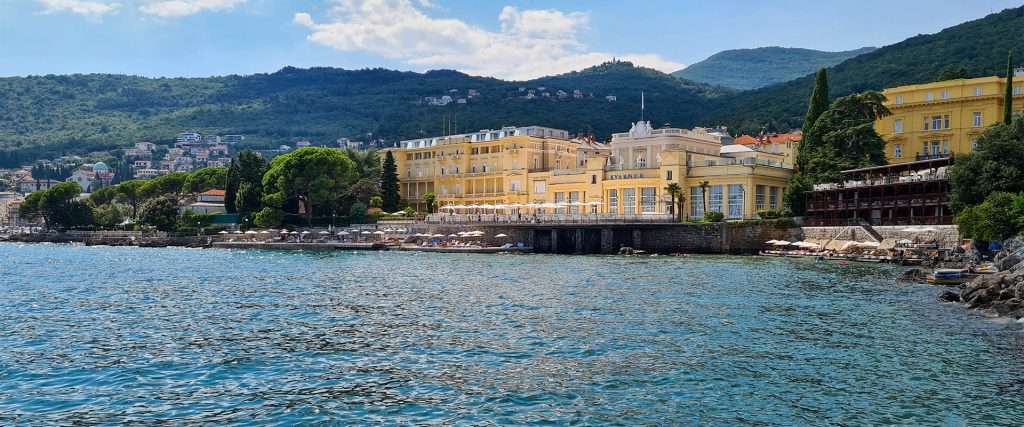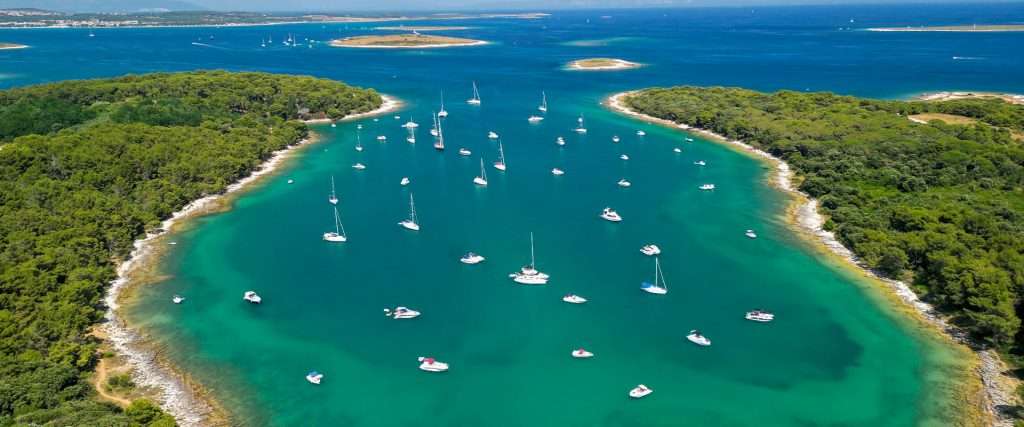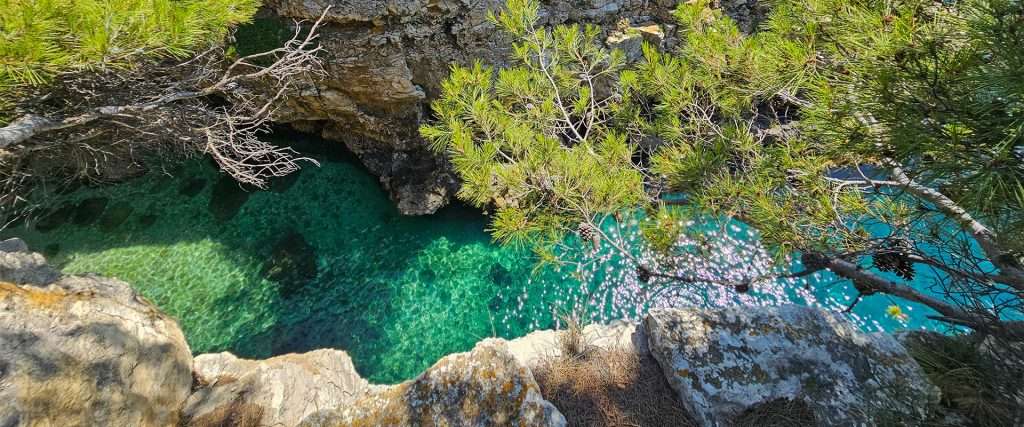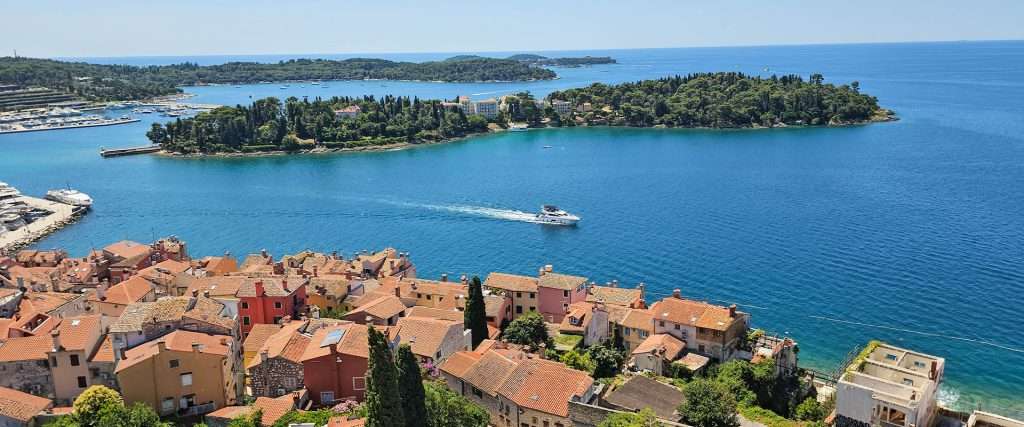Pula might not be the first place people think of when planning a trip to northern Croatia, but it deserves a spot on your itinerary. This coastal gem at the tip of the Istrian Peninsula surprised us with its blend of Roman ruins, relaxed seaside charm, and a slower pace that makes you want to linger longer.
Our time here felt like stepping into a sun-drenched history book — with sea views, ancient amphitheatres, and quiet coves just around the corner.
In this post, I’ll walk you through the best things to do in Pula, Croatia: from the mighty Pula Arena and old-town strolls to beautiful beaches, hidden caves, and a few unexpected finds from our journey through this truly underrated city.
Tip
We always prefer walking when exploring a new place, and Pula makes it easy. If you stay in or near the old town, most of the main attractions — like the Pula Arena, Forum, and the seafront — are all within walking distance. You’ll pass Roman ruins, cosy cafés, and shaded squares along the way. It’s the best way to soak up the city’s relaxed vibe and discover a few hidden corners too.
Best Things to Do in Pula
Pula may not shout for attention like Dubrovnik or Split, but this underrated gem on the Istrian Peninsula has its own magic — quieter, slower, and packed with character. From ancient Roman ruins and sparkling beaches to hilltop views and hidden caves, there’s more here than first meets the eye.
Here are some of the best things to do in Pula, Croatia, based on our own experience — with personal tips, practical info, and a few surprises you might not expect.

1. Step Back in Time at the Pula Arena
If there’s one place that defines Pula, it’s the Pula Arena Croatia, one of the most intact Roman amphitheatres in the world. It’s hard to miss. The Arena sits right near the harbour, its towering limestone arches framing the sea behind. Built in the 1st century AD during Emperor Vespasian’s rule (yep, the same emperor who commissioned the Colosseum), this arena once held up to 20,000 spectators.
What makes the amphitheatre Pula so special isn’t just its size, but its preservation. Most of the outer walls are still intact, along with all four side towers. Even the underground chambers remain, once home to gladiators, wild animals, and today, a small museum with Roman wine and olive oil exhibits.
We only admired it from the outside, and honestly, it’s just as impressive without stepping in. But if you’d like to visit, you can either explore solo with a regular ticket or join a guided tour. In summer, the Arena even hosts concerts and film screenings — imagine watching a movie under the stars in a 2,000-year-old stadium!
Opening hours: Daily from 8AM to 9PM (varies by season) & Entrance Fee: €10 for adults.
Tip: Go early in the morning or around golden hour in the evening to avoid crowds and catch the best light for photos. The Arena is about a 10-minute walk from the main square of the Pula old town, so it’s easy to combine with nearby sights.
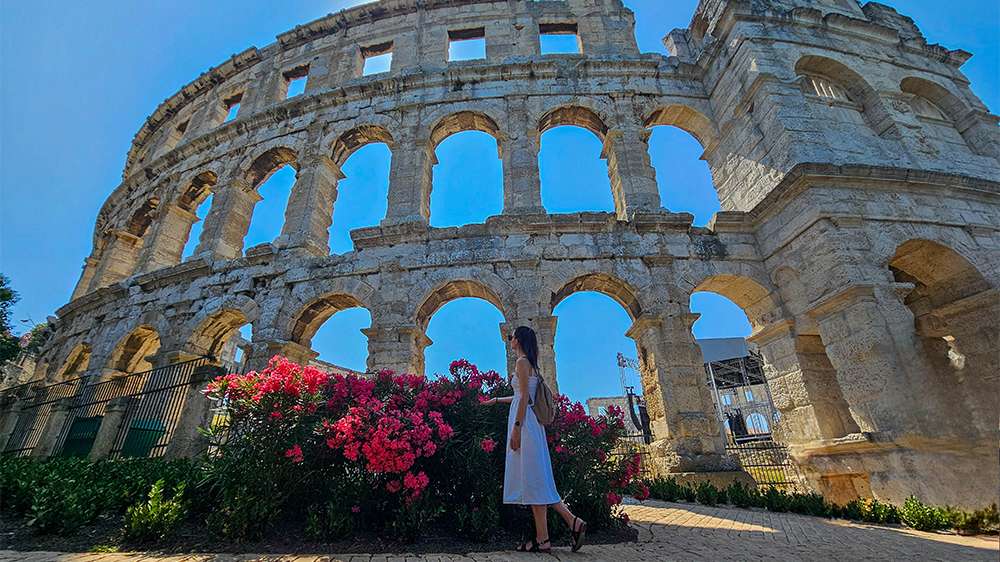
2. Walk Through Time at the Arch of the Sergii
Just outside the old city walls, the Arch of the Sergii stands as a 2,000-year-old tribute to a powerful Roman family. Built around 27 BC to honour Lucius Sergius Lepidus after the Battle of Actium, it once marked the entrance to ancient Pula through the Porta Aurea — the “Golden Gate.”
What makes this arch so special is its personal story. It wasn’t built by emperors, but by a woman named Salvia Postuma Sergia to honour her relatives. You can still see her name carved into the stone.
Today, it blends into the busy modern street, framed by cafes, shops, and street musicians. Locals pass it daily without a second glance — but if you visit around golden hour, it quietly glows. It’s a perfect reminder that in Pula, history is always just around the corner.

3. Explore the Tranquillity of Convento San Francesco
Tucked just above Pula’s old Roman Forum, the Church and Monastery of St. Francis is a peaceful little gem that often goes unnoticed, but it became one of our favourite surprises in the city. Built in 1314, this Romanesque-Gothic church offers a quiet contrast to the Roman ruins scattered around town.
Inside, you’ll find a simple, serene nave with old stone arches and worn fresco fragments that whisper stories from centuries past. But the real highlight? The cloister garden. Shaded, leafy, and wonderfully still — it was the perfect escape from the summer heat and the buzz of the city. We sat there for a while, just enjoying the calm and the cool breeze between the arcades. And to our delight, a group of little turtles waddled around the garden — such a sweet and unexpected sight.
Entry is just €1, and absolutely worth it for a moment of peace and a glimpse into this lesser-known slice of Pula’s history, so don’t skip it.
4. Climb Up to Pula Castle (Fortress Kaštel)
For panoramic views over Pula’s rooftops and the sea, head up to Pula Castle, also known as Fortress Kaštel. Built by the Venetians in the early 1600s to defend the harbour, this hilltop fort still stands guard over the city.
Inside, you’ll find the Historical and Maritime Museum of Istria, home to fascinating exhibitions from Roman times to modern-day maritime history. From the top, you can spot the Pula Arena, the Forum, and the coastline. Though, note that the view is partially obstructed by the port’s large cranes, so it’s not the best sunset spot.
One cool feature is the lift down to the underground tunnels, known as Zerostrasse. These eerie WWI-era passages connect different parts of the city below and are open to visitors.
Opening times: 9 AM – 9 PM in summer (last entry at 7:45 PM) & Entrance fee: €7 (includes museum, fortress, and Zerostrasse tunnels). Click here to visit their official website for tickets and info.
We highly recommend a visit; it’s one of the best things to do in Pula for history lovers and a great way to see the city from above.
5. Visit the Cathedral of the Assumption of the Blessed Virgin Mary
Tucked near the harbour, the Cathedral of the Assumption of the Blessed Virgin Mary is one of Pula’s most quietly fascinating sights. While it may not be as grand as the Roman Arena, its layered history tells a powerful story of resilience and faith.
Built between the 4th and 5th centuries, the church has been rebuilt and restored many times over, surviving fires, plundering, and earthquakes. Its freestanding bell tower, added in the 1600s using stones from the amphitheatre, is a striking detail in itself.
Step inside for a peaceful moment and admire its early Christian layout and timeless simplicity. It’s a quick yet meaningful stop that offers a different kind of insight into Pula’s rich past.
Love exploring historical churches and cathedrals? Discover more timeless gems in our Spain travel posts — from Seville’s Gothic marvels to Valencia’s grand facades.

6. Visit the Temple of Augustus
Right in the heart of Pula’s Forum Square, the Temple of Augustus is one of those rare places that makes you stop in your tracks. Built over 2,000 years ago to honour Emperor Augustus, it’s one of the best-preserved Roman temples outside of Italy — and yes, it’s still standing.
Its elegant columns and white stone facade might look more Italian than Croatian, but this little temple has lived many lives. From a Roman shrine to a medieval church, even a grain store, and later damaged during WWII, what you see today is a carefully restored version using original fragments. Step up to the base, and you’re literally standing where ancient citizens once gathered to worship, debate, and honour the empire.
You can admire it from the outside or pop in to see a small lapidarium of Roman sculptures and artefacts. Entry is just €2, and the real magic is just soaking it all in from one of the surrounding cafés with a coffee in hand — the perfect blend of history and everyday life.

7. Have a Stroll in Pula Old Town & Forum Square
The city’s Old Town is a place you don’t just walk through — you feel it. Its winding alleys, weathered facades, and layered architecture reflect the city’s Roman, Venetian, and Austro-Hungarian past — all blending into a charming, lived-in atmosphere.
At its heart lies Forum Square (Trg Forum), once the centre of Roman life and still the city’s main gathering spot today. Only the Temple of Augustus remains from the ancient structures, but the square is just as lively, filled with cafés, music, and everyday moments.
We loved spending time here, just sitting at a café, slowing down, and watching the world go by.
Wander beyond the square and you’ll find narrow streets, hidden courtyards, and the quiet beauty of Pula’s Old Town. No strict route to follow — just let yourself get a little lost and enjoy the stories this city has to tell.

8. Check out the Twin Gates & City Walls
Just a few steps from the Old Town, you’ll find the Twin Gates (Dvojna Vrata) — two side-by-side Roman arches that once served as one of the main entrances into ancient Pula. Built between the 2nd and 3rd century AD, they’re a quiet but powerful reminder of the city’s past.
Back then, Pula was surrounded by thick defensive walls. Today, only fragments remain, but you can still see a preserved section near the gates.
Next to the gates, there’s also a small underground stairway. It leads into the Zero Strasse, a network of tunnels used for defence in Roman times and later as bomb shelters during WWII.
This corner of the city is often overlooked, but it’s one of the best places to catch a glimpse of Pula’s ancient layout, without the crowds or ticket booths.

9. Visit Pula Market Hall & Green Market
One of the best things to do in Pula — especially if you love local food — is visit the Market Hall and the nearby Pula Green Market (tržnica). The indoor market is over 120 years old and still buzzing with life. Inside, you’ll find rows of stalls selling fresh fruit, vegetables, meats, cheeses, olive oils, honey, and truffle products. Downstairs is a lively fish market, while the upper floor has a few cafés and restaurants.
Right next to it, the outdoor farmers market is also worth a stop. It’s open daily from 7 AM to 2 PM and fills up especially on weekends with even more vendors. We loved wandering around here in the morning — it’s the perfect spot to grab picnic supplies or just enjoy the local flavours.
Tip: If you’re up for a bite, check out Furia upstairs — a casual spot serving great-value fish dishes popular with locals.

10. Visit the Small Roman Theatre
Just below the Kaštel fortress lies one of Pula’s lesser-known gems — the Small Roman Theatre. Built in the 1st century AD, it once welcomed crowds of up to 5,000 for plays, concerts, and local gatherings. After a thoughtful renovation, it now blends ancient stonework with clean modern lines and occasionally hosts performances once again.
You can explore the site freely. It’s usually quiet, with tiered seating carved into the hillside and a peaceful atmosphere that invites you to pause and imagine life in Roman times. A humble yet powerful reminder of Pula’s rich cultural layers.

11. Uncover Pula’s Ancient Floor Mosaic: The Punishment of Dirce
Hidden below street level near the Chapel of St. Maria Formosa lies one of Pula’s most fascinating Roman finds — a 3rd-century floor mosaic known as The Punishment of Dirce. Discovered after WWII bombings, this 12×6 metre mosaic once decorated a grand room of a Roman house. Its centrepiece depicts a dramatic mythological scene, while the surrounding sections feature intricate geometric designs and animal motifs.
You can still view it in its original location, two metres below today’s street level — a rare glimpse into everyday Roman life, preserved where it was first laid nearly 2,000 years ago.

12. Spot the Gate of Hercules
Just a short stroll from the Twin Gates, the Gate of Hercules is easy to miss — but it’s actually Pula’s oldest surviving Roman structure. Dating back to the 1st century BC, this weathered arch once marked an entrance into the early Roman colony. Look closely and you’ll spot a faint carving of Hercules and his club, barely visible today but still symbolic.
Above the arch, an ancient inscription names the two Roman officials credited with founding the colony of Pula between 47 and 44 BC. That makes this gate more than just a passage — it’s a cornerstone of the city’s origin story.
Simple, quiet, and blending into the everyday surroundings, the Gate of Hercules is a quick stop, but one that holds huge historical weight. It’s one of those places that reminds you: Roman Pula is still very much under your feet.

13. Evening Stroll on Sergijevaca & Kandlerova Street
Some of my favourite moments in Pula were the simple ones, like strolling down Sergijevaca and Kandlerova Street after sunset. These lively pedestrian lanes in the Old Town are perfect for an evening wander once the heat of the day fades.
Grab a gelato, sit out for a drink, and enjoy the relaxed atmosphere. You’ll pass small artisan shops, ceramic studios, local art galleries, and stalls selling everything from truffle products and olive oil to handmade jewelry and Istrian liqueurs. It’s a great area for window shopping or picking up souvenirs that aren’t mass-produced.
Personally, I always love browsing these kinds of shops, even if I don’t buy anything, it’s fun to discover local designs and see what’s made right here in Istria. These streets truly come alive in the evening, and the mix of live music, chatter, and warm lighting makes for the perfect end to your Pula day.
14. Visit Local Beaches in Pula
No trip to Pula is complete without a refreshing dip in the Adriatic! For a quick beach break close to town, head to Valkane Beach or Gortan Cove — just a 30-minute walk from the Old Town. You can also hop on a local bus, grab an Uber, cycle, or drive if you prefer an easier ride.
These beaches are popular with locals, so they can get busy, especially in summer. But they offer everything you need for a relaxed beach day — crystal-clear water, bars, restaurants, showers, and toilet facilities all nearby. A great way to unwind after a day of exploring!
Best Day Trips from Pula
If you’re spending more than a day or two in the city, you’ll want to explore some of the incredible places nearby. These day trips from Pula are perfect if you’re looking to dive deeper into Istria’s coastal beauty, nature, and historic charm.
Verudela Peninsula
Just 5 km from the city centre, the Verudela Peninsula is one of the most scenic spots near Pula. It’s home to some of the best beaches in Pula, like Hawaii Beach, Ambrela, Verudela Canyon and Histria, all with crystal-clear water and rocky coves. You’ll also find walking trails, pine forests, bars, and the Aquarium Pula, located inside an old fort.
This area was once a military zone, but today it’s full of resorts, seaside promenades, and relaxed beach vibes. Easily reachable by local bus (lines 2A and 3A), Uber, or bike — it makes for a perfect beach escape.
Click here to read my full guide to the Verudela Peninsula.

Cape Kamenjak Nature Park
Located in Premantura, about 15 km south of Pula, Cape Kamenjak (Kamenjak National Park) is an absolute highlight for nature lovers and adventure seekers. Expect dramatic cliffs, turquoise bays, hidden beaches, and scenic trails perfect for hiking or cycling.
Whether you’re into cliff-jumping, snorkeling, or just finding a quiet beach away from the crowds, Kamenjak delivers. The views are jaw-dropping, and it’s one of the best outdoor experiences near Pula. Entry is paid (by vehicle), and it’s best reached by car or scooter from the city.
Click here to read the complete guide to Kamenjak National Park.
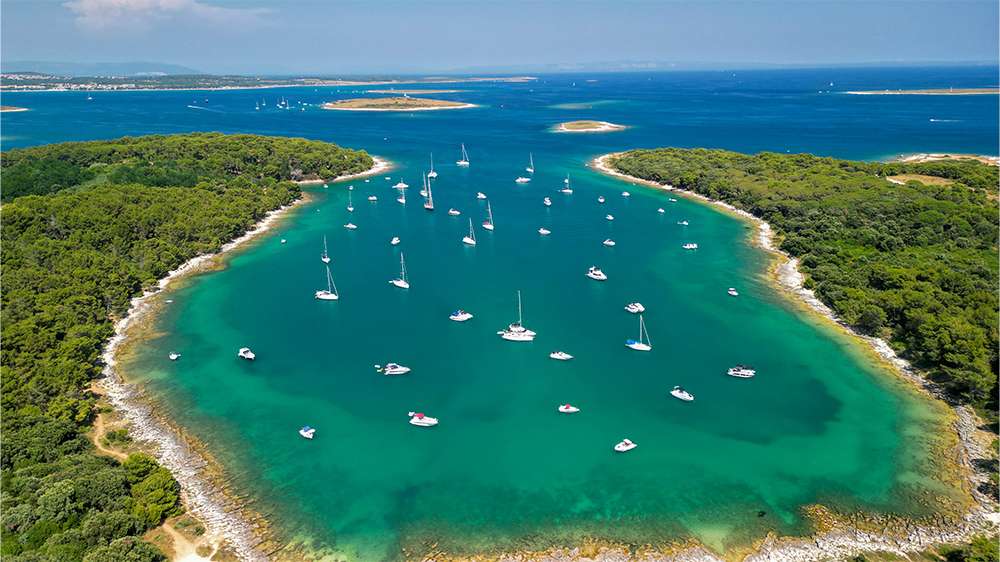
Brijuni National Park
A true gem just off the coast, Brijuni National Park is a group of 14 islands that combine lush nature, Roman ruins, exotic animals, and beautiful sea views. The main island, Veliki Brijun, is accessible via a short ferry ride from Fažana, a small town 8 km from Pula.
You can explore the island by bike or tourist train and see sights like a safari park (with zebras and llamas!), a Roman villa, and a bird sanctuary. You might even spot dolphins swimming in the surrounding waters. It’s one of the most unique day trips from Pula.
For ferry times, prices, and park info: Brijuni National Park official site

Rovinj
Just 45 minutes north of Pula, Rovinj is a picture-perfect coastal town that feels straight out of a postcard. Think cobbled alleys, pastel-coloured houses, and sea views on every corner.
It’s one of the top places to visit in Istria and a must-do day trip from Pula — though if you have time, I highly recommend staying a night or two and exploring nearby gems in inland Istria as well.
Click here to read the complete guide to Rovinj with tips on what to see, do, eat, and explore!
These day trips are perfect additions to your Pula itinerary, whether you’re staying in a hotel or booking an Airbnb in Pula. From beaches in Pula Croatia to Roman ruins, there’s no shortage of things to discover both in and around the city.
Planning to rent a car for your day trips? Check out options for car hire Pula Croatia to make exploring easier!

Best Cafes & Restaurants in Pula
Before we dive into where to eat, here’s a taste of what Istrian cuisine has to offer: simple, hearty, and full of Mediterranean flair. Thanks to its close proximity to Italy, you’ll also find strong Italian influences from Neapolitan-style pizzas to creamy risottos.
Expect plenty of fresh seafood, homemade pasta, local olive oil, and of course, Istrian truffles. Here are some of the most typical dishes you might come across:
- Fuži or pljukanci with truffles – Traditional Istrian pasta tossed with rich truffle sauce
- Black risotto – Creamy rice infused with squid ink, often served with seafood
- Buzara – Mussels or shellfish cooked in white wine, garlic, and parsley.
- Ćevapi – Grilled minced meat rolls, often served with flatbread/French fries, ajvar and onions
- Ajvar – Roasted red pepper and eggplant spread, often served as a side with grilled meats like ćevapi, or as a condiment with bread and cheese
- Stuffed peppers / Sarma – Classic Balkan comfort food, often found in home-style restaurants
- Pag cheese & Kulen – A strong sheep cheese from Pag island, paired with spicy cured sausage
- Pašticada – A Dalmatian speciality: marinated beef or veal, slow-cooked in a rich sauce, served with gnocchi
- Fritule – Mini doughnut-style balls, often dusted with sugar or drizzled with chocolate
Restaurants
- Veritas Food & Wine
- Agrippina Street Food
- Pizzeria Amore
- Pizzeria Jupiter
- Piazza Nove
- Street food two
- Fresh Sandwiches & Salads
- Bistro Alighieri
- Konoba Boccaporta
- Farabuto
- Konoba Taj (Taj Tavern)
- Konoba Bocun Pula
- Grill restaurant “Odisej”
- Restoran Furia
Cafés, Bakeries, Gelatos & Wine Bars
- Cvajner Gallery Café
- Scandal Express Cafe
- Pekara Forum
- Mlinar
- Gagliardo
- Rustico Bar
- Wine Bar SORSI
- aRoma Gelato
- Sereny Ice Cream
- Pomaj Gelato
These spots are ideal whether you’re enjoying a slow morning coffee or looking for a memorable dinner after a day of Pula sightseeing.
Local Dining Tips for Pula
- Eat like a local at konobas – cosy, traditional taverns serving hearty Istrian dishes at great prices
- Visit the Market Hall in the morning for fresh fish, meat, and produce — head upstairs for an affordable seafood lunch
- Explore the Farmers Market for olive oil, truffle products, cheese, and local fruit — best visited early
- Grab a quick breakfast from Pekara Forum — choose from flaky pastries or freshly made sandwiches
- Dinner starts later — many spots don’t get busy until after 8 PM, especially in summer when the air cools down
- Reserve ahead at popular restaurants during peak season (July–August), especially on weekends
- Most places stay open late, so there’s no rush — enjoy your evening meal under the stars!
Where to Stay in Pula
Pula is compact, so most attractions and sightseeing spots are easy to reach. We stayed right in the city centre, just a few metres from Forum Square, which was perfect, especially if you’re not renting a car. It’s ideal for first-timers who want to explore Pula Old Town, visit the Pula Arena, and enjoy cafes, markets, and local restaurants on foot. You’ll find plenty of Airbnbs, apartments, and B&Bs in the heart of the city.
If you’re after beach time and full-service resorts, head towards Verudela, home to the best beaches in Pula. This area is slightly outside the centre but offers sea views and coastal paths.
Some popular Pula hotels in Verudela include:
- Park Plaza Verudela Pula
- Splendid Golden Rocks Resort
- Park Plaza Arena Pula
- Grand Hotel Brioni Pula
- Boutique Hotel Valsabbion
Tip: If you’re driving, check the parking situation before booking, as it can be tricky in the Old Town.
How to Get to and around Pula
Getting to Pula
Flight
Fly into Pula Airport (PUY), just 6 km (15 min) from Pula’s old town. The airport shuttle bus operates between the airport and Pula Bus Station for approximately €6, with schedules timed to match flight departures. For full details, check the official website.
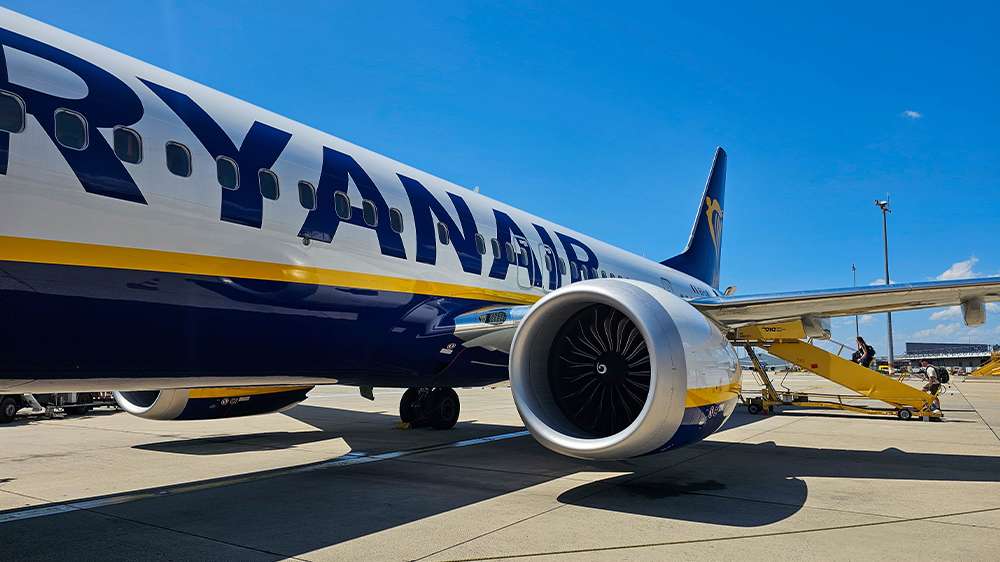
Train
- Pula has one main station, just a few minutes’ walk from Pula Arena and the old town
- Regional connections (e.g., Rijeka to Zadar) include Pula stops, though transfers are often required
Bus
- FlixBus connects Pula to many Croatian and European cities, with reasonable fares and free WiFi onboard
- Arriva Croatia buses link Pula to Zagreb, Zadar, Rijeka, and beyond, all departing from the centrally located Pula Bus Station (near the Arena and a mile from the old town). Tip: download the Arriva app to receive 5% discount
Getting around Pula
- Walking: The compact Pula old town, Arena, Forum, and nearby beaches are all walkable
- Public Bus: Local buses run throughout Pula and to coastal spots. It’s a practical and affordable solution for avoiding walking in the midday heat. Check routes and fares on the official site
- E-hailing services: Uber is an affordable and convenient choice for quick journeys
- Cycling: Pula is generally bike-friendly, but keep in mind the midday heat in summer. Cycling is especially rewarding in nature areas like Kamenjak National Park, where trails run through pine forests and along rugged coastlines
- Car Hire: Renting a car is a great option if you plan to explore beyond Pula. The city is easy to drive around, and many travelers visit by car from nearby countries like Italy, Austria, and Hungary
Practical & Budget Travel Tips for Pula
Make the most of your time (and wallet) in Pula, Croatia, with these helpful travel tips:
- Best Time to Visit: May–June & Sept–early Oct are ideal — warm weather, swimmable sea, fewer crowds, and more affordable stays
- Stay Central: Book an Airbnb in Pula or a B&B in the Old Town to stay close to all the main Pula attractions and easily explore on foot — no car needed
- Eat Like a Local: Grab a pastry or sandwich from Pekara Forum for breakfast, and head to a local konoba for hearty Istrian dishes at great prices
- Fresh Fish at the Market: Don’t miss Restoran Furia upstairs in the Market Hall. It’s open until 3 PM and serves fresh seafood straight from the stalls below
- Sun Protection: Summers can be scorching. Always wear high SPF sunscreen, bring a hat, and carry a water bottle. Especially when exploring or heading to the beaches in Pula
- Card or Cash: Most places accept cards, but it’s smart to carry some cash for markets, bakeries, or beach kiosks. Use cards like Revolut or Monzo to avoid extra fees
- Stay Connected: We used Nomad eSIM on this trip, and it worked perfectly. Click here to try Nomad eSIM, enter code ‘KJUDQTUPVE’ and receive $5 off your purchase
- For more helpful tools, check out our Ultimate Travel Resources Guide
Final Thoughts on Visiting Pula, Croatia
If you’re wondering, is Pula worth visiting?, the answer is yes! Especially if you’re a history lover or looking to explore more of Istria’s southern coast. From the majestic Roman amphitheatre to hidden beaches and dramatic cliffs, Pula has plenty to offer.
But if we had to choose? While we enjoyed our time in Pula, we fell in love with Rovinj. Its charming old town, lively waterfront promenade, and endless spots for gelato, sunset drinks, and people-watching gave it a warmth and vibrancy that Pula slightly lacked, mostly due to its more urban layout and the absence of a central promenade by the sea.
Pula or Rovinj? Ideally, split your time between the two to explore nearby highlights like Cape Kamenjak, Verudela, and even day trips into inland Istria. But if you only have time to stay in one place, we’d recommend basing yourself in Rovinj and venturing out from there.

Pula Map
Get Inspired
Pula in Croatia is a city where ancient history and coastal charm come together. From the towering Pula Arena to quiet hilltop fortresses, every corner tells a story. Stroll through sunlit streets, discover temples, mosaics, and gates from a bygone era, then unwind with fresh seafood and Adriatic views.
If you’re dreaming of a seaside escape with a historic twist, this video guide walks you through the best things to do in Pula — a gem on the Istrian Peninsula that’s perfect for history lovers and culture seekers alike.
Ready to dive in? Press play and let Pula inspire your next trip.

